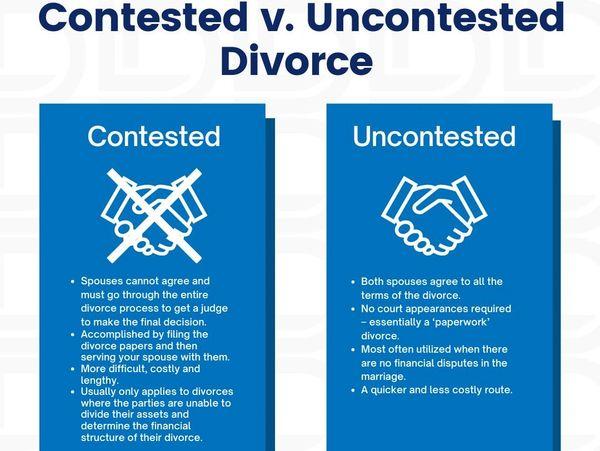TOPIC
Saving Costs and Boosting First Aid Training Efficiency for Your Company

In today’s competitive business environment, companies are constantly seeking ways to optimize operations, reduce costs, and enhance employee productivity.
One often-overlooked area with significant potential for cost savings and efficiency gains is workplace safety training, particularly first aid at work onsite training.
By bringing first aid training directly to your workplace, businesses can not only save money but also improve training outcomes, foster a safer work environment, and boost employee morale.
This article explores the benefits of onsite first aid training, how it can reduce costs, and why it’s a smart investment for companies of all sizes
The Importance of First Aid Training in the Workplace
Workplace accidents and medical emergencies can happen at any time, regardless of the industry.
From minor injuries like cuts and burns to more serious incidents such as cardiac arrests or allergic reactions, having employees trained in first aid can make a critical difference.
First aid training equips employees with the skills to respond effectively in emergencies, potentially saving lives and minimizing the severity of injuries.
Beyond the obvious safety benefits, first aid training also contributes to:
- Compliance with Regulations: Many countries require businesses to have a certain number of first aid-trained employees based on the size and nature of the workplace.
- Reduced Downtime: Quick and effective responses to accidents can minimize disruptions and keep operations running smoothly.
- Enhanced Employee Confidence: Trained employees feel more confident and empowered, leading to a more positive work environment.
What is Onsite First Aid at Work Training?
Onsite first aid training involves bringing certified trainers to your workplace to conduct first aid courses tailored to your company’s specific needs.
Unlike offsite training, where employees travel to external locations, onsite training is delivered in a familiar environment, making it more convenient and effective.
Key Benefits of Onsite First Aid Training
- Cost Savings
-
-
- Reduced Travel Expenses: Onsite training eliminates the need for employees to travel to external training centers, saving on transportation costs.
- Minimized Downtime: Employees can attend training without taking significant time away from their work, reducing lost productivity.
- Bulk Discounts: Training providers often offer discounts for group sessions, making onsite training more cost-effective than individual offsite courses.
-
- Customized Training
-
-
- Onsite training can be tailored to address the specific risks and challenges of your workplace. For example, a manufacturing company might focus on treating burns and fractures, while an office-based business might emphasize CPR and managing stress-related incidents.
-
- Improved Engagement and Retention
-
-
- Training in a familiar environment helps employees feel more comfortable and engaged. Practical, hands-on exercises using workplace-specific scenarios enhance learning and retention.
-
- Convenience and Flexibility
-
-
- Onsite training can be scheduled at times that suit your business operations, minimizing disruptions. It also allows for larger groups to be trained simultaneously, ensuring consistent knowledge across the team.
-
- Enhanced Workplace Safety Culture
-
- Onsite training demonstrates your company’s commitment to employee safety, fostering a culture of care and responsibility. This can lead to higher morale, increased loyalty, and improved overall performance.
How Onsite First Aid Training Saves Costs
- Reduced Absenteeism
-
-
- Employees trained in first aid can respond quickly to accidents, reducing the severity of injuries and the need for extended sick leave. This helps maintain productivity and reduces the financial impact of absenteeism.
-
- Lower Insurance Premiums
-
-
- Many insurance providers offer reduced premiums for companies with robust safety programs, including first aid training. Demonstrating a commitment to workplace safety can lead to significant savings.
-
- Fewer Workplace Incidents
-
-
- A well-trained workforce is better equipped to prevent accidents and respond effectively when they occur. This reduces the likelihood of costly workplace incidents and associated legal liabilities.
-
- Efficient Use of Resources
-
- Onsite training allows companies to train multiple employees at once, maximizing the use of time and resources. It also eliminates the need for repeated sessions, as all relevant staff can be trained simultaneously.
Boosting Training Efficiency with Onsite First Aid Training
- Tailored Content
-
-
- Onsite training programs can be customized to address the specific needs of your workplace, ensuring that employees learn skills that are directly applicable to their roles.
-
- Hands-On Learning
-
-
- Practical, scenario-based training helps employees retain information better than theoretical lessons. Onsite training allows for real-life simulations using workplace equipment and environments.
-
- Immediate Application
-
-
- Employees can immediately apply what they’ve learned in their daily work, reinforcing their skills and improving overall workplace safety.
-
- Consistent Standards
-
- Onsite training ensures that all employees receive the same high-quality instruction, creating a consistent standard of knowledge and preparedness across the organization.
Implementing Onsite First Aid Training in Your Company
- Assess Your Needs
-
-
- Identify the specific risks and challenges in your workplace to determine the type of first aid training required. Consider factors such as the size of your workforce, the nature of your industry, and any regulatory requirements.
-
- Choose a Reputable Provider
-
-
- Select a certified training provider with experience in delivering onsite first aid courses. Look for providers that offer customizable programs and have positive reviews from other businesses.
-
- Schedule Training Sessions
-
-
- Plan training sessions at times that minimize disruptions to your operations. Consider offering multiple sessions to accommodate different shifts or departments.
-
- Promote Participation
-
-
- Encourage employees to participate by highlighting the benefits of first aid training, such as increased confidence, improved safety, and potential career development opportunities.
-
- Evaluate and Reinforce
-
- After the training, gather feedback from participants to identify areas for improvement. Regularly reinforce first aid skills through refresher courses and practical drills.
Examples of Onsite First Aid Training Success
- Manufacturing Company Reduces Workplace Injuries
-
-
- A mid-sized manufacturing company implemented onsite first aid training for its employees, focusing on treating burns, cuts, and fractures. Within a year, the company reported a 25% reduction in workplace injuries and a significant decrease in related costs.
-
- Office-Based Business Saves on Insurance Premiums
-
-
- An office-based business introduced onsite first aid training, including CPR and stress management. The company’s insurance provider recognized its commitment to safety and reduced its premiums by 15%.
-
- Retail Chain Improves Employee Confidence
-
- A national retail chain conducted onsite first aid training for its store managers and staff. Employees reported feeling more confident in handling emergencies, leading to faster response times and improved customer satisfaction.
Conclusion
Onsite first aid at work training is a cost-effective and efficient way to enhance workplace safety, reduce costs, and boost employee morale. By bringing training directly to your workplace, you can ensure that your employees receive tailored, practical instruction that meets your specific needs.
The benefits of onsite first aid training extend beyond compliance and cost savings. It fosters a culture of safety, empowers employees, and demonstrates your company’s commitment to their well-being.
In a world where workplace safety is more important than ever, investing in onsite first aid training is a smart decision that pays dividends in the long run.
So, if you’re looking to save costs, improve training efficiency, and create a safer work environment, consider implementing onsite first aid training for your company. It’s an investment in your employees, your business, and your future.
TOPIC
AI Music Generator from Text: A New Era of Music Creation

The integration of artificial intelligence (AI) into various industries has led to significant advancements in fields ranging from healthcare to entertainment. One of the most fascinating developments is the AI music generator from text, a tool that allows anyone, regardless of musical expertise, to create original music simply by providing text input. This technology is transforming the way music is composed, opening up new opportunities for creators, musicians, and businesses alike.
What is an AI Music Generator from Text?
An AI music generator from text is a software tool that uses artificial intelligence to compose music based on written descriptions, prompts, or instructions. These AI models are trained on large datasets of music and use machine learning algorithms to recognize patterns, structures, and characteristics of different musical genres, tempos, and styles.
Users can describe the type of music they want—whether it’s a specific mood (e.g., “calm and soothing”), genre (e.g., “jazz” or “classical”), or instrumentation (e.g., “piano and strings”)—and the AI Music Generator from Text a unique composition that matches the description. In essence, these AI systems take the text input and transform it into an audio composition, complete with melody, rhythm, and harmony.
How Does an AI Music Generator from Text Work?
The process behind AI music generation from text involves several key steps:
- Text Input: The user provides a textual description or instruction about the kind of music they want. This could include details such as the genre (e.g., rock, pop, electronic), mood (e.g., uplifting, melancholic), tempo (e.g., fast or slow), or even specific instruments (e.g., guitar, drums, piano).
- Natural Language Processing (NLP): Once the text is submitted, the AI uses Natural Language Processing to analyze the text. NLP helps the AI understand the meaning behind the words, including sentiment, mood, and context, so it can better translate those ideas into musical elements.
- Music Generation: After analyzing the text, the AI system generates music by combining various musical elements like melody, harmony, rhythm, and instrumentation. The AI may use deep learning techniques to compose these elements in a coherent and expressive way, ensuring that the resulting piece aligns with the user’s description.
- Output: Finally, the AI produces an audio file, such as a .wav or .mp3 file, that contains the generated music. The user can then listen to the composition, download it, or further customize it.
Why is AI Music Generation from Text Important?
AI music generators from text represent a significant leap forward in the democratization of music creation. Here are several reasons why this technology is groundbreaking:
- Accessibility for Non-Musicians: Traditionally, creating music required knowledge of musical theory and the ability to play instruments. However, with AI music generators, anyone can create music by simply typing out their ideas. This opens up music composition to people who may not have formal music training but want to express themselves through sound.
- Speed and Efficiency: Composing music traditionally can be a lengthy process, often involving multiple steps like writing melodies, arranging instruments, and recording. AI music generators streamline this process by producing high-quality music in a fraction of the time, which is particularly useful for businesses, content creators, and filmmakers who need music quickly for their projects.
- Endless Possibilities for Customization: AI music generators allow for a high degree of customization. Users can choose the genre, mood, tempo, and instrumentation, giving them control over the final product. This means the tool can be used for a variety of applications, from creating background music for videos to producing unique songs for a specific project.
- Cost-Effectiveness: Hiring a professional composer or purchasing royalty-free music can be expensive. AI music generators offer an affordable alternative, with many tools offering subscription-based pricing or one-time purchase options. This makes it easier for independent creators or small businesses to access custom music without breaking the bank.
- Creative Inspiration: Even for seasoned musicians and composers, AI music generators can be a valuable tool for inspiration. When facing a creative block or looking for new ideas, these tools can provide fresh musical ideas and help jump-start the creative process.
Popular AI Music Generators from Text
Several AI-powered platforms and services are leading the way in text-based music generation. Here are a few notable examples:
- Amper Music: Amper Music is a user-friendly AI music generator that allows users to create custom music tracks quickly. By choosing various parameters like mood, genre, and instruments, users can generate music that fits their specific needs, whether it’s for a film, advertisement, or video game.
- Aiva (Artificial Intelligence Virtual Artist): Aiva is an AI composer that specializes in classical and orchestral music. It allows users to input text descriptions of their desired composition and generates complex musical arrangements. Aiva is often used by filmmakers and video game developers for scoring projects.
- OpenAI’s MuseNet: OpenAI’s MuseNet is a deep-learning model capable of generating music in a wide range of styles, from classical to contemporary genres. MuseNet can take both text prompts and musical inputs to create compositions, providing an impressive level of creativity and variety in its output.
- Soundraw: Soundraw is an AI music generator that allows users to create personalized music by selecting mood, genre, and instrument preferences. It’s designed for creators who need high-quality background music for various media projects, making it a useful tool for video makers, marketers, and content creators.
- Jukedeck: Now integrated into TikTok, Jukedeck allows users to generate royalty-free music for videos and other projects. The platform is designed for simplicity, enabling users to create music with just a few text-based inputs, which is perfect for non-musicians looking to enhance their content.
The Future of AI Music Generators from Text
The future of AI music generation is bright. As AI technology continues to improve, we can expect even more advanced features that will enhance music creation. Here are a few trends to look out for:
- Real-Time Collaboration: Future AI tools may allow for real-time collaboration, where users can interact with the AI during the music creation process, providing feedback and adjusting parameters as they go.
- More Personalized Experiences: AI music generators will likely become more personalized, learning from a user’s past preferences to create music that better aligns with their style and needs.
- Integration with Music Production Software: We may see AI music generators seamlessly integrated into professional music production software, enabling musicians to use AI-generated ideas as a foundation for their compositions.
Conclusion
AI music generators from text represent a groundbreaking advancement in music creation. By enabling users to generate music through simple text input, these tools have made music creation more accessible, efficient, and customizable. Whether you’re a filmmaker, content creator, or aspiring musician, AI music generators offer an exciting way to bring your creative ideas to life. As the technology continues to evolve, the possibilities for AI-generated
music are virtually limitless, opening up new avenues for artistic expression and creativity.
TOPIC
Uncontested vs. Contested Divorce in Alabama: What You Need to Know

Facing a divorce in Alabama can feel overwhelming. You have two main paths: uncontested or contested. In an uncontested divorce, you and your spouse agree on key issues such as property division and child custody. This choice saves time and reduces stress. On the other hand, a contested divorce involves disagreements that require court intervention. It’s more complex and demands patience. Knowing the differences helps you make informed decisions. You don’t have to navigate this process alone. A divorce lawyer in Alabama can guide you. They offer clarity and support. Choose wisely to minimize emotional and financial costs. Understanding these paths empowers you during a challenging time. It sets the foundation for moving forward. Remember, every decision impacts your future. So, choosing the right path is crucial. Stay informed. Seek guidance. Make choices that support your well-being and future.
Understanding Uncontested Divorce
Uncontested divorces are simpler. Both parties cooperate and agree on major issues. This includes property division, child custody, and support. You avoid lengthy court battles. The process is quicker, with less emotional strain. Filing is straightforward, and finalizing the divorce takes less time. It’s often more affordable, reducing financial burdens.
Exploring Contested Divorce
Contested divorces are more challenging. Disagreements require legal intervention. Each party may have different views on asset division or child-related matters. This leads to a court hearing where decisions are made by a judge. The process is longer and involves more legal fees. Emotional stress can be higher, impacting all involved.
Key Differences at a Glance
| Aspect | Uncontested Divorce | Contested Divorce |
| Agreement | Mutual agreement on all issues | Disagreements on one or more issues |
| Process Duration | Shorter | Longer |
| Cost | Lower | Higher |
| Emotional Impact | Less stress | More stress |
Choosing Between Uncontested and Contested Divorce
Your situation determines the best choice. If you both agree, an uncontested divorce is ideal. It allows you to move on quickly. Seek legal guidance to ensure all documents are correct. A contested divorce becomes necessary if disagreements persist. In this case, legal representation is crucial. A lawyer advocates for your interests and provides needed support.
Steps in Uncontested Divorce
First, you and your spouse must discuss and agree on all aspects. Prepare and file a joint petition for divorce. Ensure all paperwork is accurate and complete. After filing, there is a waiting period. In Alabama, this is usually 30 days. Once this period ends, a judge reviews and finalizes the divorce.
Steps in Contested Divorce
A contested divorce starts with filing a complaint. Your spouse must respond. Both parties then gather evidence. This includes documents related to assets and child custody. Pre-trial meetings with a judge aim to reach an agreement. If unresolved, the case goes to trial. The judge makes the final decisions. This process can take months or even years.
Seeking Legal Support
Legal support is vital in both situations. A lawyer ensures your rights are protected. They help with paperwork and navigate court procedures. Choosing the right lawyer affects the outcome. Research and select a reliable Alabama State Bar attorney. They provide peace of mind during this difficult time.
Impact on Children
Divorce affects children deeply. An uncontested divorce can minimize their stress. Both parents work together, providing stability. In contested divorces, tension may rise. It’s important to communicate openly with children. Assure them that both parents love and support them.
Conclusion
Deciding between uncontested and contested divorce is crucial. Each has unique challenges and benefits. Understanding these differences helps you make the best choice for your situation. Legal support is essential for navigating this process successfully. Consider your needs and those of your family. Choose a path that fosters healing and growth. Stay informed and seek professional guidance. Your future depends on the decisions you make today.
TOPIC
How to Protect Your Property with Effective Erosion Control Solutions

Introduction
Maintaining your environment’s aesthetic appeal is not the only way to protect your property from the negative impacts of soil erosion. It is essential to safeguard your investment and preserve your environment’s natural equilibrium. Property owners must have a strong erosion control plan as environmental issues worsen. This essay emphasizes how crucial it is to implement efficient erosion control measures and stresses the value of specialist knowledge in attaining long-lasting outcomes.
Understanding the Dynamics of Erosion
Soil erosion is a natural process in which the earth’s surface layers are gradually worn away by wind, water, and other environmental elements. While it is natural, human activities like construction, deforestation, and poor land management accelerate the process, leading to significant property damage. Without proper intervention, erosion can result in foundation instability, reduced land usability, and increased pollution in nearby water bodies.
The Importance of Reliable Solutions
When tackling erosion, particularly in environmentally sensitive areas, seeking reliable erosion control Southern California services is crucial. This involves combining natural solutions with scientific methods to reinforce soil stability effectively. The key to successful erosion control is addressing the issue at its source while incorporating sustainable practices to prevent further degradation. Depending on the severity of the erosion, solutions can range from planting native vegetation that naturally anchors the soil to constructing physical barriers that divert water flow.
Natural vs. Engineered Solutions
Both natural and engineered solutions are integral to a comprehensive erosion control strategy. Natural solutions include planting trees, grasses, and bushes that bind the soil with their root systems, whereas engineered solutions might involve using geotextiles, retaining walls, or terraces.
Natural approaches are advantageous due to their low environmental impact and cost-effectiveness. Vegetation not only stabilizes soil but also enhances biodiversity and improves air quality. However, these methods can take time to yield results and may not be sufficient for severe erosion problems. In contrast, engineered solutions provide immediate stability and are versatile in various terrains and conditions. Combining both methods often yields the best results, balancing long-term sustainability with immediate effectiveness.
The Role of Professional Expertise
Attempting to address erosion issues as a do-it-yourself (DIY) project can lead to unsatisfactory results and even exacerbate existing problems. Engaging professionals in erosion control ensures the measures are tailored to the property’s specific challenges. Experts possess the knowledge and experience necessary to assess site conditions, determine the root causes of erosion, and design appropriate interventions.
Professionals can provide comprehensive analyses and solutions incorporating geological considerations, local climate conditions, and potential environmental impacts. Their expertise ensures the chosen solutions are practical and compliant with local regulations and environmental standards. Moreover, professional projects tend to have a longer lifespan, reducing the need for frequent repairs or adjustments.
Integrating Erosion Control into Property Management
Incorporating erosion control measures into your property management plan is a proactive step toward preventing damage before it occurs. Regularly monitoring your property, especially after severe weather events, helps identify early signs of erosion and take timely action. Implementing measures like strategically placing drainage systems or performing routine vegetation maintenance can significantly diminish the risk of erosion-related damage.
Property owners can ensure their properties remain stable and environmentally secure through ongoing management and consultation with erosion control experts. Additionally, integrating these measures into standard property management practices increases asset longevity and reduces unexpected maintenance costs.
Conclusion
Effective erosion control is a vital aspect of property protection that requires a blend of natural strategies and engineered solutions. Through the engagement of professionals, property owners can ensure that the implemented measures are precisely tailored, offering the best protection against erosion. In today’s climate of extreme weather and environmental stressors, taking this approach is not just a preventative measure but a necessary investment in the future of your property. By prioritizing professional guidance and sustainable practices, you can safeguard your property against the relentless forces of erosion.
-

 BLOG1 month ago
BLOG1 month agoIZoneMedia360 .Com: Exploring the Features and Benefits
-

 BLOG4 months ago
BLOG4 months agoAbout Blog TurboGeekOrg: A Go-To Hub for Tech Enthusiasts and Latest Innovations
-

 BLOG5 months ago
BLOG5 months agoWhat is a Golden Transit in Magi Astrology?
-

 BLOG1 month ago
BLOG1 month agoA Complete Guide to ProcurementNation.com Shipping
-

 ENTERTAINMENT5 months ago
ENTERTAINMENT5 months agoTyquaez Pickett: A Rising Star in the Entertainment World
-

 HOME1 month ago
HOME1 month ago5StarsStocks.com Nickel: Invest for a Bright Future
-

 BLOG3 months ago
BLOG3 months agoWho Is Hall Sinclair? The True Story of Olivia Colman’s Son
-

 NEWS4 weeks ago
NEWS4 weeks agoChloe Berger News: Insights on Employee Rights and Talent Retention
